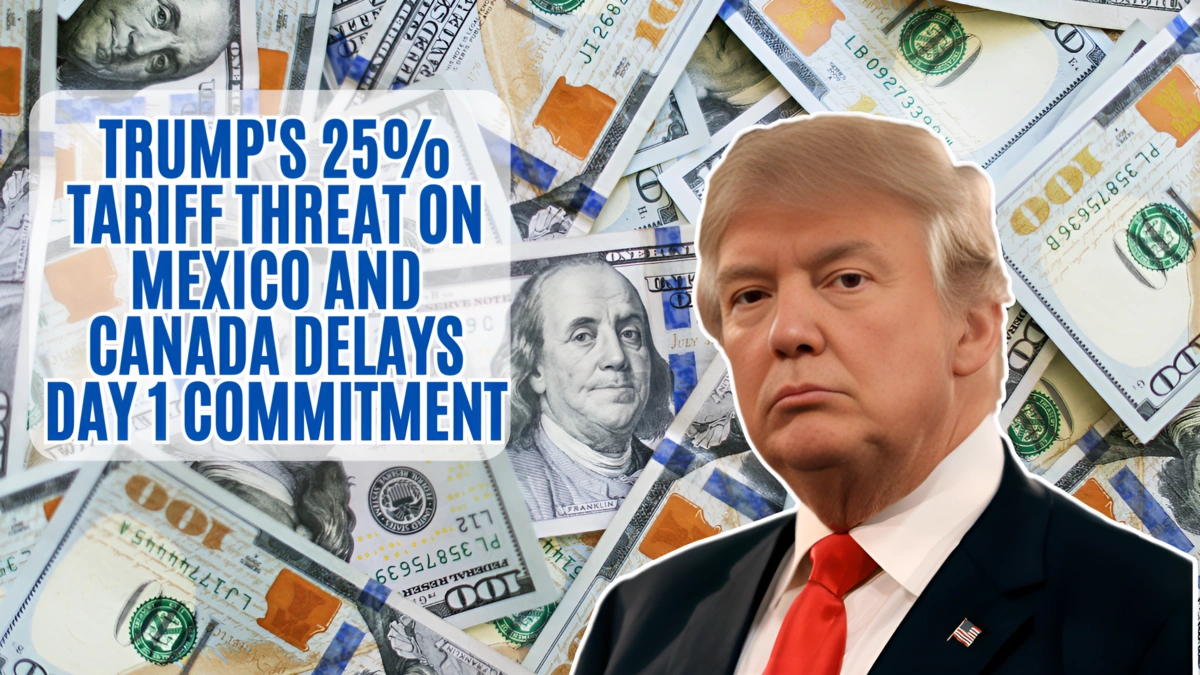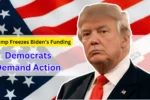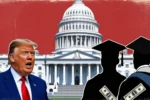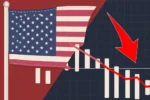President Donald Trump announced during an Oval Office signing ceremony on Monday that his administration plans to impose a 25% tariff on imports from Mexico and Canada starting February 1. This marks a significant shift in North American trade policy, potentially raising costs for American consumers. Mexico and Canada are two of the United States’ top trading partners, with $475 billion in imports from Mexico and $418 billion from Canada last year. These countries account for 30% of the total value of U.S. imports. On the export side, the U.S. sent $354 billion worth of goods to Canada and $322 billion to Mexico, collectively making up a third of total U.S. exports.
While the proposed tariffs could harm trade relations with two of its closest partners, the bigger concern is that these tariffs may provoke retaliatory actions from both Mexico and Canada. This could hurt U.S. businesses, especially those that rely on imports from these countries, leading to price hikes for everyday goods in the U.S. However, Trump’s economic advisors are debating how best to implement the tariffs, with some questioning their potential impact on both domestic consumers and businesses.
The proposed tariffs, which Trump discussed at length during the ceremony, would likely lead to increased costs for American consumers, contradicting Trump’s earlier claims that foreign nations, not the U.S. populace, would bear the cost. According to research from the Peterson Institute for International Economics, the tariffs could result in higher prices on a wide range of goods, including electrical devices, toys, and sporting equipment. U.S. companies importing transportation equipment, chemicals, and other products would also face additional taxes. While Trump advocates for tariffs as a tool to secure better deals for American workers and industries, critics warn that this approach could harm consumers already burdened by inflation.
This trade policy shift is part of a broader economic strategy that Trump unveiled in an executive action on Monday. The action mandates a review of U.S. trade agreements, including the U.S.-Mexico-Canada Agreement (USMCA) signed during his first term, and outlines plans for further investigations into America’s trade deficits. Trump’s administration is also focused on leveraging tariffs as a means of addressing issues like fentanyl trafficking and illegal immigration, seeking ways to implement stricter trade policies that support national security concerns.
Though Trump’s economic team is divided on the specifics of the tariff plan, the idea of levying higher tariffs has remained central to his agenda. While some officials, like Treasury Secretary nominee Scott Bessent, have expressed caution, fearing potential retaliation and economic consequences, others such as Peter Navarro, a key trade adviser, argue for a more aggressive approach. This internal debate reflects the broader ideological differences within the Trump administration regarding trade policy.
The 25% tariff on Mexico and Canada is a key element of Trump’s vision for his second term, aiming to strengthen American industry and reduce reliance on foreign imports. However, as experts like Clark Packard from the Cato Institute argue, imposing such tariffs could breach the terms of the USMCA and undermine the long-term credibility of U.S. trade agreements. It could also spark a series of retaliatory measures from trade partners, exacerbating trade tensions and potentially leading to a broader trade war.
Despite these concerns, Trump’s administration continues to push forward with its vision of a protectionist trade policy. The idea is to use tariffs strategically to protect American workers and industries from what Trump perceives as unfair foreign competition. His administration remains committed to renegotiating trade deals, and the tariff plan is part of a larger strategy to assert U.S. economic power globally. However, critics caution that the full impact of such a policy could be detrimental to both domestic consumers and the broader U.S. economy.
Ultimately, the full details of Trump’s tariff policy will unfold in the coming months as his administration continues to assess the best path forward. While the approach promises to be a significant departure from past trade practices, it also carries considerable risks. As Trump moves ahead with these policies, it will be important to balance his trade ambitions with the economic realities facing American businesses and consumers.



